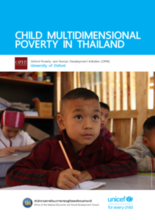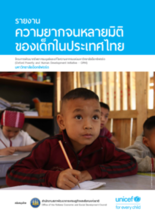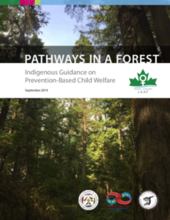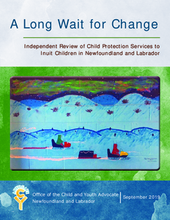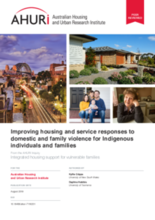Displaying 171 - 180 of 505
This report presents a Child Multidimensional Poverty Index (Child MPI) for Thailand.
This report presents a Child Multidimensional Poverty Index (Child MPI) for Thailand.
This report explores the experiences of 64 Indigenous parents who have had engagement with the child welfare system in Canada. Their stories and expertise provide a wealth of knowledge about the strengths and weaknesses of current prevention-based eff orts and programs. Their experiences demonstrate that, despite the Ministry for Children and Family Development’s (MCFD) emphasis on improving prevention-based services for Indigenous families, long-standing apprehension-focused practices continue to permeate the system.
This review was initiated by a formal request from Nunatsiavut Government to investigate Inuit children’s experiences in the child protection system in Canada.
According to this research, the unintended consequences of limited housing pathways puts Indigenous women at significant risk of having their children removed by Child Protection. The research examines how housing and other service responses need to be improved to meet the needs of Aboriginal individuals and families in the aftermath of domestic and family violence.
Through a thematic content analysis of qualitative interviews with members of migrants’ families, this article illustrates that in the context of internal labour migration, family responsibilities shift in ways that make unemployed grandmothers in South Africa who do not receive the Old Age Grant vulnerable.
The aim of this study was to describe lifetime involvement in child protection system (CPS) in South Australia, by type of contact.
This article describes how the disconnect experienced by Aboriginal children removed from their families and communities in Australia is understood as a dysphoria holding both body-focused aspects and cultural aspects.
The aim of this study was to assess the feasibility and acceptability of a home‐based intervention—Amagugu Asakhula—to promote nurturing interactions and healthy behaviours with the caregivers of preschool children.
This open access article details a culturally informed approach by sharing the findings of a Cultural Healing Program (CHP) designed, developed and delivered by an Aboriginal Community Controlled Organisation. The program was for Aboriginal survivors of institutional child sexual abuse who had also experienced cultural abuse having been forcibly removed from their families as children and in the process disconnected from their communities, culture and land.

